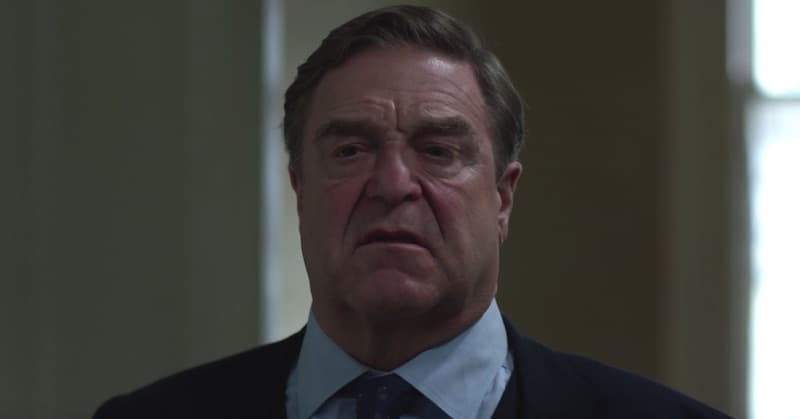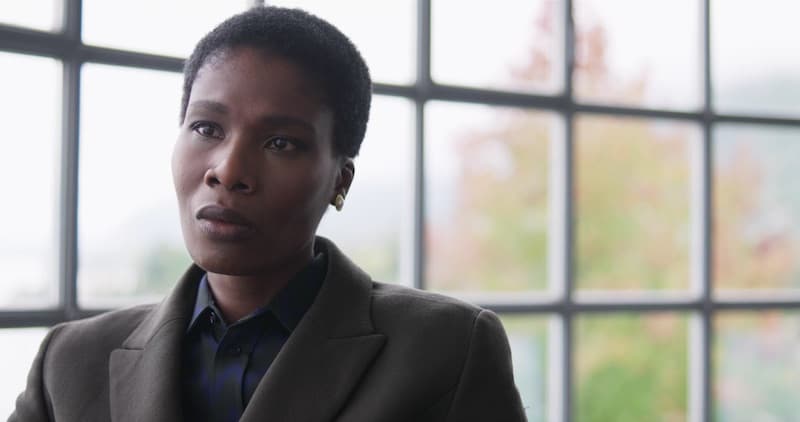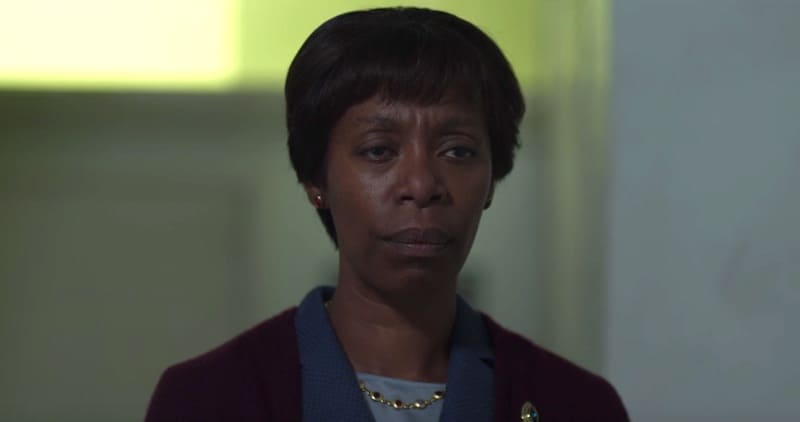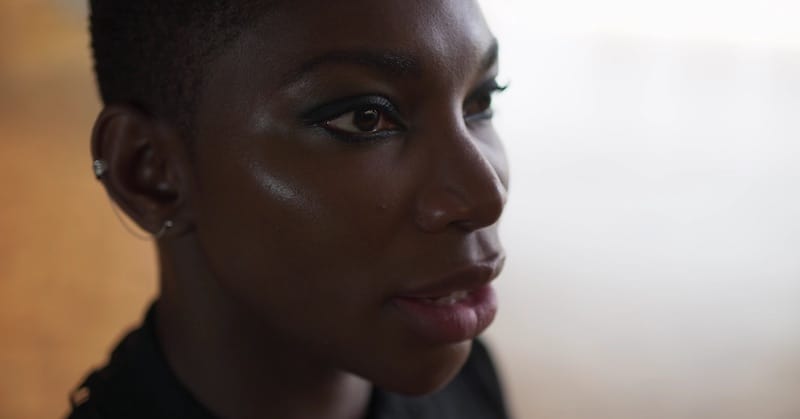In Black Earth Rising, Hugo Blick’s 8 part mini-series on Netflix, we watch a metaphoric chess game taking place. Humans claim dominion over the game. They assume different roles on the game board, determined by greed or altruism, the quest for power, the quest for justice, the need to love or to hate. When the game is done, the board is reset. New players take their places and the game begins again.
Michaela Coel and John Goodman lead a large cast. Coel plays Kate Ashby who was rescued from the genocide in Rwanda by her English adoptive mother Eve Ashby (Harriet Walter). Eve is a barrister. She prosecutes cases at the International Criminal Court in The Hague. She’s taking on a case prosecuting a man Kate knows fought against the genocide in Rwanda. This drives a wedge between them.

Kate is a legal investigator. She works with her mother and with Michael Ennis (Goodman), an American lawyer who works in London. From this simple beginning, the story expands to include governments, armies, the UN, corporations, and especially the Tutsi and Hutu people of Rwanda.

The Rwandan genocide is a mere 25 years in the past. Many people involved are still alive. But the Rwandan government lead by Bibi Mundanzi (Abena Ayivor) wants the past forgotten. There is unity now, peace. Old wounds are best left alone. The country struggles to move on.

Yet others want justice. Michael Ennis works with Eve, Eunice Clayton (Tamara Tunie) US Assistant Secretary of State for African Affairs, and Alice Munezero (Noma Dumezweni) a Rwandan government official, to achieve what they see as justice for the genocide.
Blick tells the story as a game of cat and mouse. Always teasing at things that are never quite spelled out. Always leading the viewer on with one more cloaked clue. Even when the last episode ended, I wasn’t sure I understood all the relationships between the characters and the outcomes of the story.
I want to mention a few more characters before I move on into more general ideas about the series. Lucian Msamati played David Runihura, an advisor to the Rwandan president and a former lover of hers. He was also the driver of his own agenda regarding Rwanda’s future. Emmanuel Imani played Florence Karamera, a man hired by Eunice Clayton to protect Kate and a genocide survivor himself. Tyrone Huggins played Patrice Ganimana, the man Kate and Michael most wanted to see held accountable as the architect of the genocide against the Tutsi people.
Why Black Earth Rising Works
Black Earth Rising is a grim series on a grim topic. I’ve seen films, for example Hotel Rwanda, where this story is told so horrifyingly it’s unbearable to watch. The way this series deals with that horror is to use dreamlike animations when Kate tries to recall what happened during the killings. It removes the viewer just enough.
It doesn’t remove Kate from the pain of her past. This fictional character is our surrogate in understanding genocide and justice surrounding this historical event. She’s traumatized, has PTSD, and takes drugs prescribed by her therapist. We see the horror through her – through the superb performance of Michaela Coel.

I’ve seen Michaela Coel do comedy in Chewing Gum. I’ve seen her sing and dance in Been So Long. But in Black Earth Rising she’s truly luminous. In strokes both subtle and large, she makes the story real, gives it human emotion and depth. She’s a stunningly beautiful woman – both powerful and vulnerable. I think she’s proven herself a major talent in this series, if she hadn’t already done that with Chewing Gum. She deserves Emmy and BAFTA noms, at the least, for this work.
There are moments of humor. Kate especially can unloose a bit of funny snark.
Like Angelina Jolie’s First They Killed My Father, Hugo Blick choose to tell the story of a national trauma using a child of that trauma. It’s a good way to approach this kind of sweeping story.
Hugo Blick, in an interview with Variety, said, “Trauma of that size — the Rwandan genocide — is going to be societal as well as individual,” he says. “It was a very big template — a big thing to look at. I was most interested in looking at how we in the West had responded to that aftermath and legacy of trauma, and that’s how the story developed.”

Camera angles, the way shots are framed and focused are a huge part of the success of the series. It’s visually brilliant in every scene. From moments focused on fingers tapping impatiently, or hands touching, or long views of lone figures standing in the light, or close ups of the emotion on the actors faces, the cinematography by Hubert Taczanowski is genius.
Countries divided
There’s plenty of blame of go around in this story. The English, the French, and the Americans basically refused to do anything to stop the genocide of almost a million Tutsis. Some would say they profited from it.
The theme song for the series was “You Want it Darker” by Leonard Cohen. One of the lyrics is “A million candles burning for the help that never came.” That sums up the way the international community reacted to the genocide at the time.
What about the African people themselves, whipped into a killing frenzy by government propaganda? Were they merely puppets? What drove the Hutu majority to slaughter the Tutsi minority? As I watched, I thought often of America, divided by hate-filled rhetoric and filled with the incessant drum beat of mass murders from right wing terrorists.
A series like this one asks a lot of the viewer. You have to be willing to wade through a long, complex, tale. You have to be serious and pay attention. You have to be open to more than one possible truth and point of view. I thought it was worth the effort. I thought Black Earth Rising was extremely well done.
The series is available on Netflix.
Like what you read here? Share it with your friends!

Leave a Reply